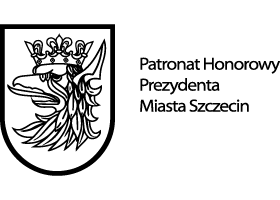Helmut Newton and his photography defy easy categorization. Many of us believe we understand his work – or at least its most prominent aspects. Yet the German-Australian photographer left behind such an influential and iconic body of work that any systematic analysis inevitably falls short if completeness is the goal. Newton worked almost exclusively on commission, creating images for magazines, fashion designers, and other clients. Over the decades, he produced what is arguably the most widely published photographic oeuvre of all time. His photographs are at once contemporary and timeless, continuing to provoke and enchant viewers today. It is therefore fitting to explore Newton's work through selected examples, paying close attention to how he staged each image.
This curatorial approach is taken up once again in the exhibition at the Szczecin Philharmonic Hall, which brings together
nearly 40 vintage exhibition posters by Newton alongside a dozen musician portraits. These historical posters have since become sought-after collector's items, commanding high prices on the art market.
Each framed vintage poster represents a past exhibition of Newton’s work. His fashion photography was first shown publicly in 1975 at the Canon Gallery in Amsterdam, followed by exhibitions in commercial galleries beginning in 1976. By the 1980s, museums had also begun to invite Newton for solo exhibitions. Though he had already reached the pinnacle of his career, his reputation as one of the most important photographers of all time continued to grow. The selected posters –
from Paris, Venice, Milan, Tokyo, Turin, New York, Hamburg, Copenhagen, Vienna, London, Salzburg, and Berlin – offer a glimpse into Newton’s unrivalled oeuvre and his restless, cosmopolitan life. They span his three main genres – fashion, nudes, and portraits – some of which have become iconic. Since the establishment of the Helmut Newton Foundation in Berlin, similar posters have formed part of the permanent exhibition on the museum’s ground floor, hung in dense rows on a long wall – a popular photo motif for countless visitors. Likewise, at last year’s major Newton retrospective Fact & Fiction in La Coruña, Spain, vintage posters provided an introduction to the main exhibition of his photographs.
In Szczecin, the exhibition posters are accompanied by a selection of musician portraits, creating a thematic resonance with the venue itself: the five-story Philharmonic Hall, designed by Barozzi Veiga (led by Fabrizio Barozzi and Alberto Veiga), which opened in 2014 and received the prestigious Mies van der Rohe Award.
Musicians can be extraordinary performers – onstage and off. Among them are M
ick Jagger and
David Bowie, both portrayed multiple times by Helmut Newton and featured in this exhibition. Also on view are vintage and exhibition prints of other acclaimed musicians, such as the Italian opera singer
Luciano Pavarotti. Newton photographed him in Monte Carlo in 1993 for Vanity Fair, showing the singer in a dinner jacket, deeply focused, just moments before stepping out of his dressing room and onto the stage. Such a portrait – and the very possibility of creating such an intimate image – speaks to the profound trust between subject and photographer. Visitors will also encounter the British pop singer
Sting, photographed in Milan reclining on a hotel bed in a dark, double-breasted suit and white shirt collar. Beside him lies a clarinet – an unexpected prop for a performer best known for playing bass guitar. Other portraits in the show introduce us to singers Juliette Gréco, June Anderson, and Carla Bruni, as well as musicians
David Lee Roth, Malcolm McLaren, and
Willy de Ville. Newton always gave his subjects room to express their individuality, while skillfully revealing something uniquely characteristic in each of them.
Every portrait by Helmut Newton tells a concentrated, complex story. The music portrait has evolved into an important subgenre, especially in magazine publishing, where the visual appetite of music fans fuels endless demand. Newton photographed frequently – but not exclusively – for Condé Nast publications, including Vanity Fair, where many of his portraits first appeared, as well as in Egoïste and The New Yorker. Statistically speaking, Newton photographed more actors than musicians, yet he nonetheless created numerous masterpieces within this artistic genre – many of which can now be discovered in Szczecin.
Dr. Matthias Harder – Director and Curator of the Helmut Newton Foundation in Berlin









